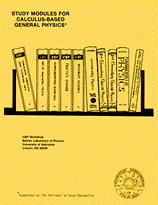Instructional Materials in Physics and Astronomy
Date of this Version
1975
Document Type
Article
Abstract
You have probably encountered a system known as an "electric eye," which senses light from an artificial source or the sun. This information is used to open doors, count pedestrian or auto traffic, turn on lights at sunset, read holes in punched card, and for a host of other applications. Most of these devices are based on the photoelectric effect, which is the light-induced emission of electrons from atoms.
The photoelectric effect completely baffled physicists at the time of its discovery. Einstein's explanation of this process, which won the Nobel Prize in 1921, was a major part of the twentieth-century revolution in physics known as the quantum theory. In this module we shall study the photoelectric and Compton effects, the processes that clearly demonstrate that the energy and momentum in electromagnetic waves are transferred as discrete entities called photons.



Comments
From Study Modules for Calculus-Based General Physics
Copyright © 1975 CBP Workshop, University of Nebraska–Lincoln.
Reproduction rights granted.